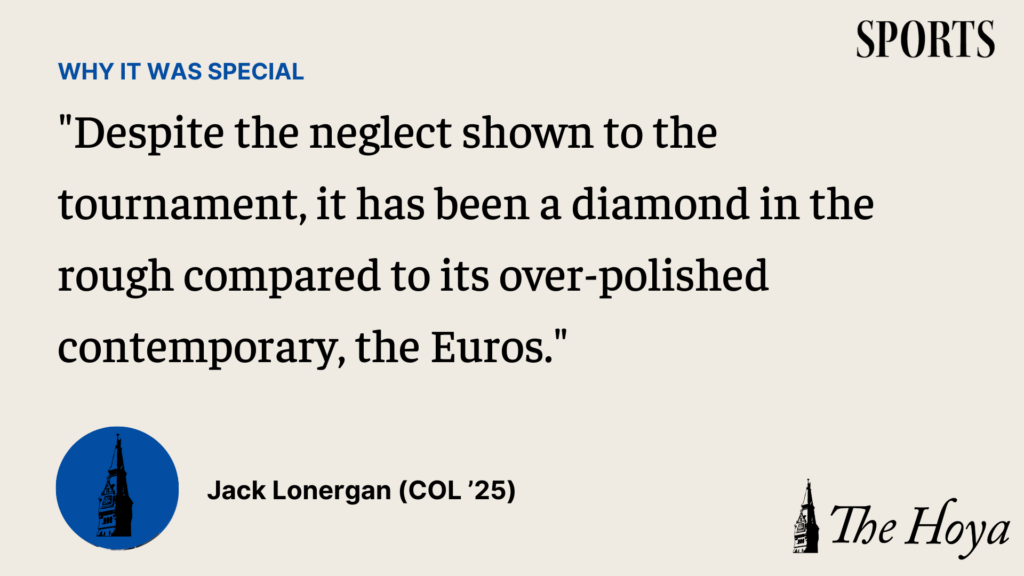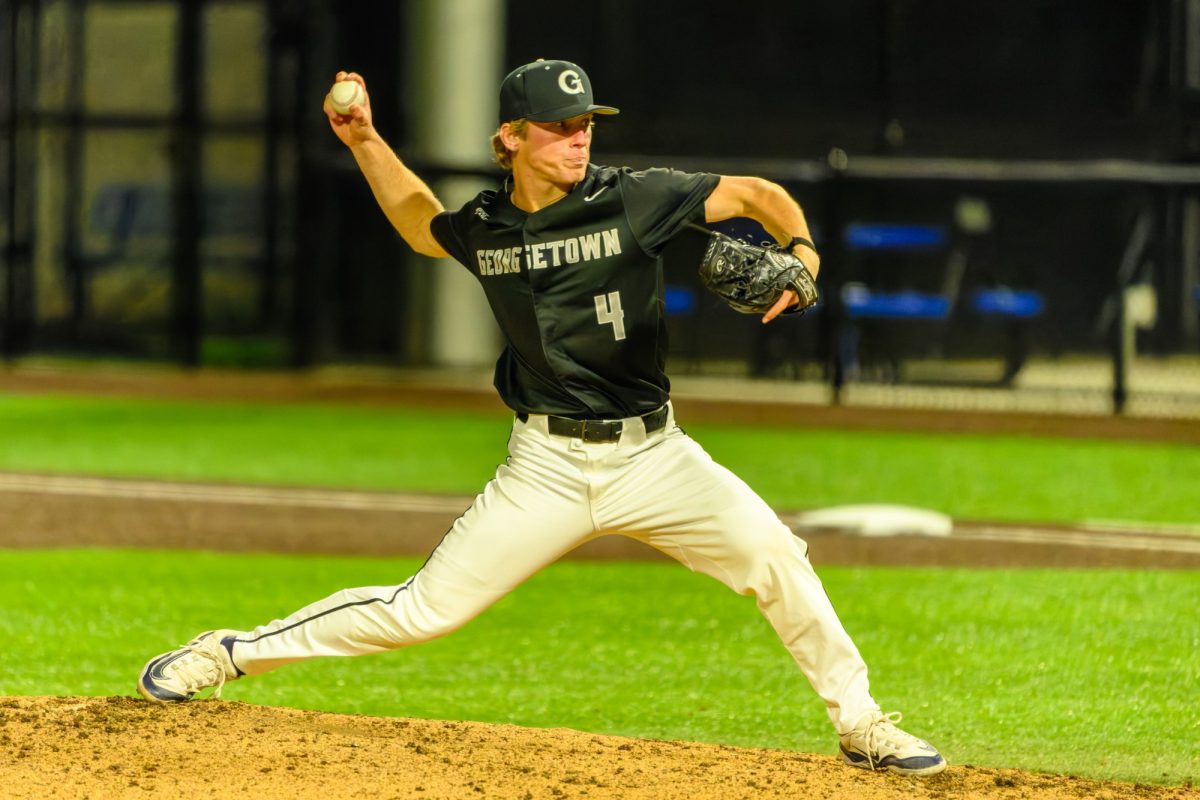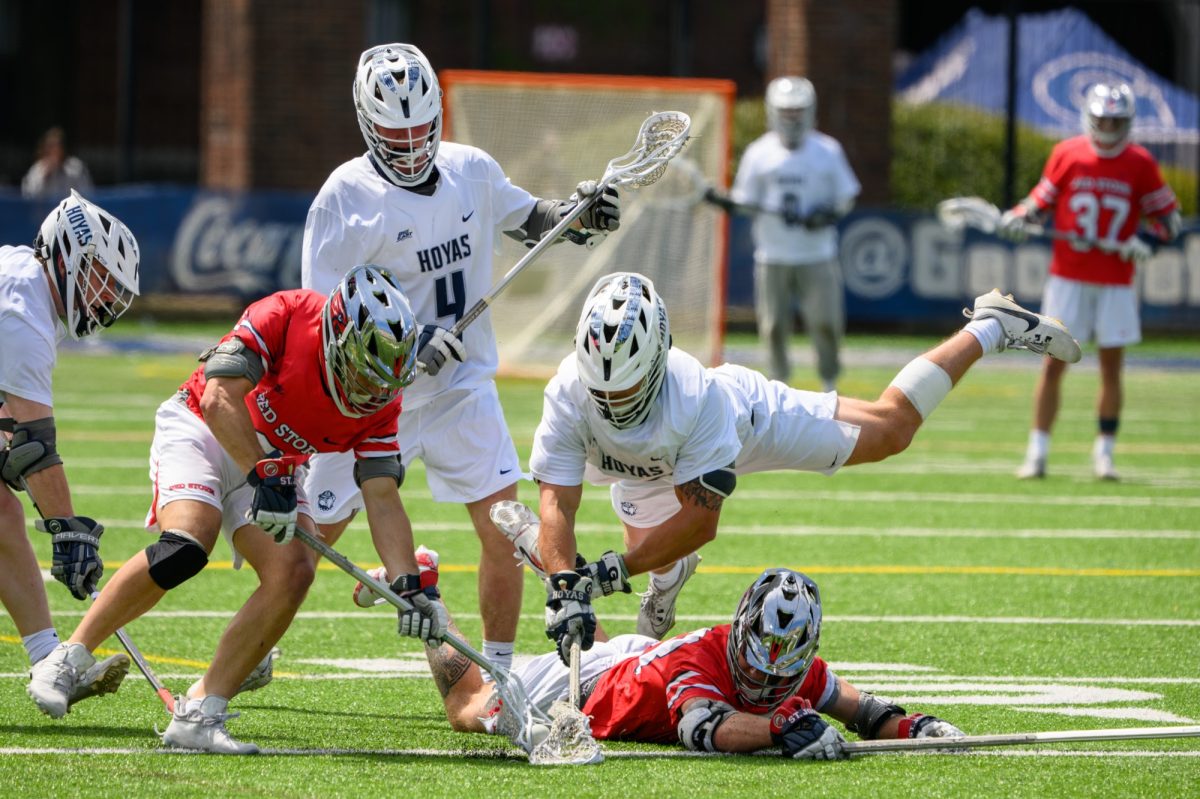I have never seen a soccer match played in worse conditions.
I came home from school in February 2015 and turned on the TV to watch something, anything, that would brighten up the dark afternoon of a British winter. A soccer match in Equatorial Guinea did the trick. I was no stranger to the Confederation of African Football (CAF) Africa Cup of Nations before this tournament, but watching Zambia and Cape Verde play out a 0-0 draw in rain so violent that they could hardly see made me realize why it was so special.
Though European clubs look down on it, commentators unfairly criticize the athletes, and the lack of funding often makes for low-quality productions, the Africa Cup of Nations is a hidden gem.
An international soccer tournament every other February between members of the Confederation of African Football, the Africa Cup of Nations simultaneously features some of the best players as well as some of the lowest-ranked teams in the world. It has beautiful kits with lions, elephants and traditional fabric patterns embossed on the players’ chests. It has fans who paint their entire bodies and dance for the full 90 minutes, regardless of their team’s result. It has nicknames recognizable the world over, such as Cameroon’s Indomitable Lions, Egypt’s Pharaohs and Tunisia’s Eagles of Carthage.
But most importantly of all, it has captivating soccer.
Unique as it might be, the Africa Cup of Nations does not exist without resistance. It overlaps with the middle of the season of every major European league, often causing the public to overlook it. Furthermore, some European clubs are very reluctant to release their players mid-season to participate in the tournament, which is held in February. Players are thereby denied the high honor of representing their countries at a major tournament by this managerial objection.
African athletes’ technical skills are also unfairly scrutinized in the media. European commentators often praise white players for their versatility and intelligence while criticizing Black players for a purported lack of technical understanding or discipline. Singling out Black players for their physical strengths without acknowledging their intellectual attributes plays into racist stereotypes that diminish perceptions of athletes’ abilities.
Despite the disproportionate criticism they face, players of African descent are integral to major international contest titles. For example, the French squad that won the 2018 FIFA World Cup featured upwards of a dozen players with African roots. In addition, one of the best players in the world, Mohamed Salah, hails from Egypt.
Unlike other international tournaments, the African Cup does not have seemingly limitless funding, which causes pitch quality and broadcasting capability to be pushed to the side. The lack of funding, however, does not mean these nations cannot compete on a global scale. The talent the African Cup showcases is truly world-class –– it’s just packaged in a different way.
Most European clubs, for example, are relatively homogenous. Differences are very rare, whether it’s uniforms, training routines or even styles of play. Good ideas spread like wildfire in elite soccer. The Gegenpress, for example, started as a niche tactic used by a few teams in Germany. It has since been adopted by every league across Europe.
This is not to say that every European match and team is exactly the same, but there seem to be more similarities than differences across the continent. The African Cup of Nations, however, has thus far maintained its own identity rather than adopting the mechanical nature of its European sibling.
In Africa, the soul of soccer is alive and well. Teams often sing on the way to matches and celebrate every goal with dancing, a passion mirrored by their supporters in the stands. Despite the neglect shown to the tournament, it has been a diamond in the rough compared to its over-polished contemporary, the Euros.
Underestimated teams make up the real heart of the tournament. Teams like Comoros which, making its first-ever appearance at the tournament, knocked out the giant that is Ghana. This was the first time Ghana had failed to make the knockout rounds since 2006. Or, perhaps the real star of the show is Malawi, who only called up two Europe-based players and still qualified for the round of sixteen. Malawi led pre-tournament favorites Morocco for 40 minutes before ultimately falling 2-1.
In the knockout stages so far, there have been three matches decided by penalty kicks and 13 red cards issued. Full of magic from superstars, rain-soaked games and referees who end matches prematurely, the Africa Cup of Nations is an event to pay attention to. Semifinals began Feb. 2 when Burkina Faso fell to Senegal 1-3 and Thursday, Feb. 3 when Cameroon lost on penalties to Egypt 1-3.
Jack Lonergan is a first-year in the College. Why It Was Special appears online and in print every six weeks.









